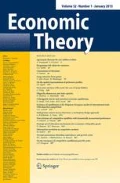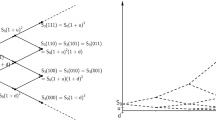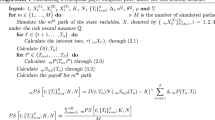Summary.
We develop a method of assigning unique prices to derivative securities, including options, in the continuous-time finance model developed in Raimondo (2001). In contrast with the martingale method of valuing options, which cannot distinguish among infinitely many possible option pricing processes for a given underlying securities price process when markets are dynamically incomplete, our option prices are uniquely determined in equilibrium in closed form as a function of the underlying economic data.
Similar content being viewed by others
Author information
Authors and Affiliations
Corresponding author
Additional information
Received: 14 April 2003, Revised: 7 January 2004,
JEL Classification Numbers:
G13, D52.
This paper is dedicated to Birgit Grodal, whose strength and character we greatly admire. We are very grateful to Darrell Duffie, Steve Evans, Botond Koszegi, Roger Purves, Jacob Sagi, Chris Shannon, Bill Zame and an anonymous refereee for very helpful discussions and comments. The work of both authors was supported by Grant SES-9710424, and Anderson’s work was supported by Grant SES-0214164, from the National Science Foundation.
Rights and permissions
About this article
Cite this article
Anderson, R.M., Raimondo, R.C. Market clearing and derivative pricing. Economic Theory 25, 21–34 (2005). https://doi.org/10.1007/s00199-004-0468-6
Issue Date:
DOI: https://doi.org/10.1007/s00199-004-0468-6




